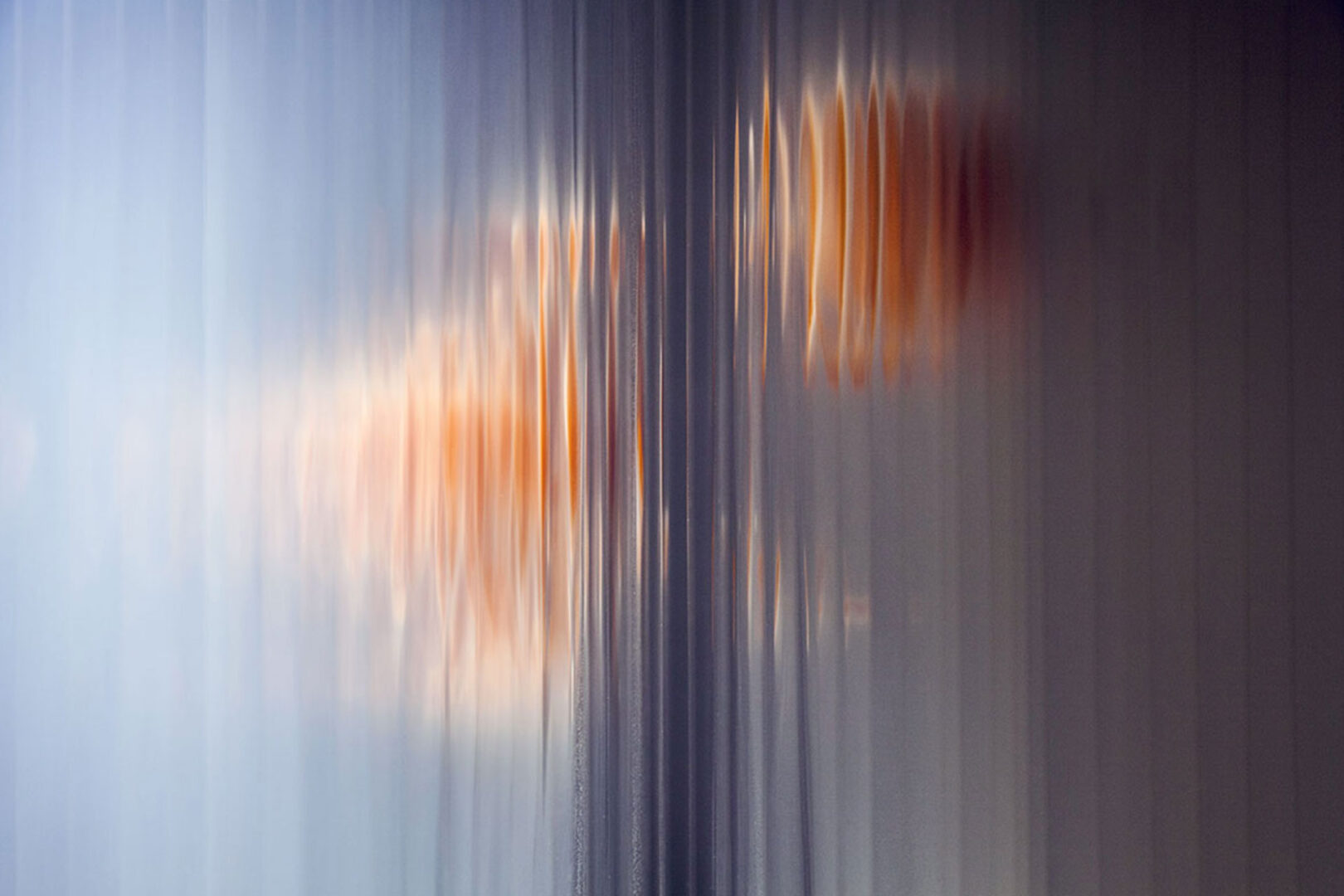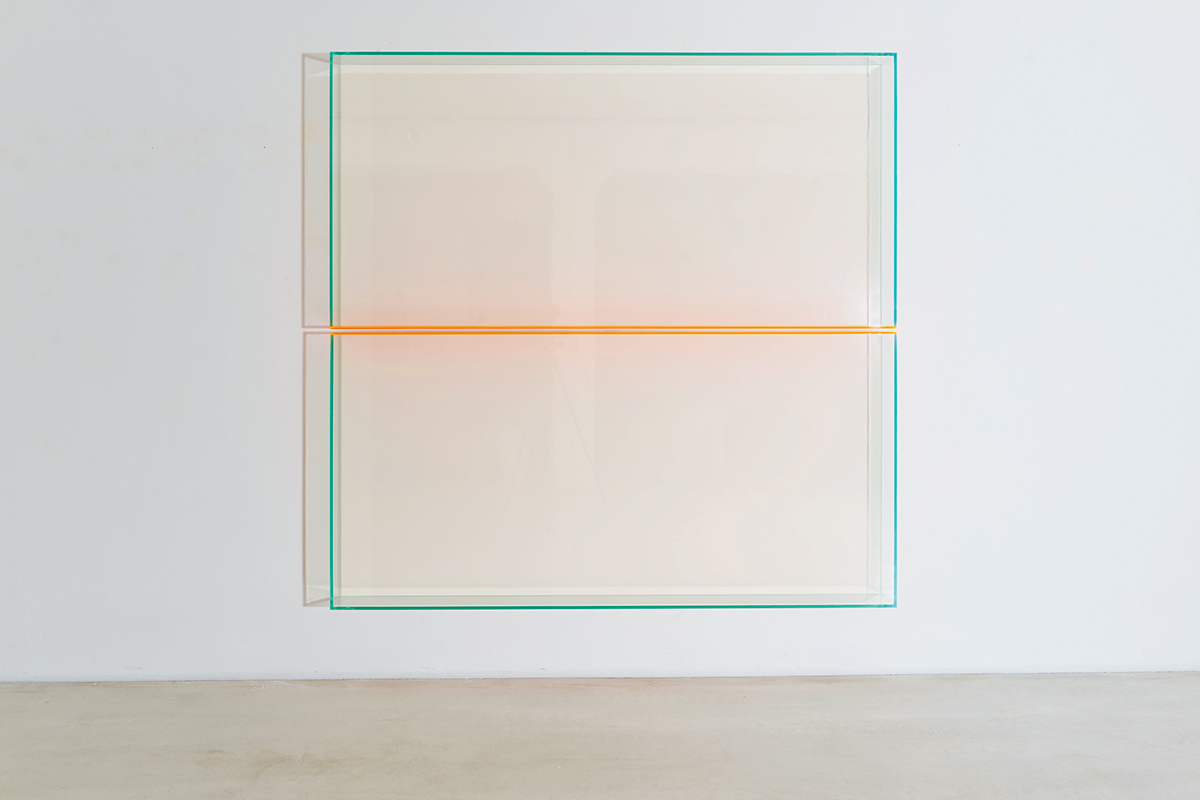Visual artists David Spriggs and Regine Schumann discuss the role of transparency, both in its physicality and concept: from material, to object, to luminance constraints
Transparency between visible and invisible
Transparency – a term whose meaning has continued to evolve, fluctuating on a spectrum between the visible and invisible, depends on the presence of light to ‘shine through’. As defined by the philosopher Byung-Chul Han: «Everything has become transparent: unveiled or exposed by the apparatuses that exert a kind of collective control over the post-capitalist world. Yet, transparency has a dark side that, ironically, has everything to do with a lack of mystery, shadow, and nuance. Behind the apparent accessibility of knowledge lies the disappearance of privacy, homogenization, and the collapse of trust». As part of our ongoing discussion, we asked artists David Sprigs and Regine Schumann to share their views on this subject.
David Spriggs: In reference to my work, I created Transparency Report (2014), a series of three-dimensional bags referring to surveillance. The series touched on broader subjects of surveillance, technology, that which is beyond human vision, and the metaphor of transparency. By referencing x-rays, I also touched on themes of state power, the invasiveness of technology, and how transparency can be used against us. Similar to how our luggage is x-rayed at the airport to create our profile, each work was a portrait.
Regine Schumann: As a child, I painted in watercolor. Whenever light passes through fine objects and casts a colorful shadow, the atmosphere brightens. During those years, my father had a brain tumor; he became ill. I remember the doctor saying that ‘if we had been able to see the cancer earlier, he could have survived, but that now it was too late’.
This interest in the transparent world, coupled with this experience where another outcome could have been possible had we been able to see more than we could, motivated me to say, ‘I need to capture something different’. At the Braunschweig University of Art, I was impressed by the power of color and light, and I wanted to learn the techniques to capture them. After realizing I didn’t have to be a traditional painter to capture my ideas, I came across acrylic plates.
Transparency on Regine Schumann and David Spriggs’ works
DS: I am drawn to old artworks in art history because one technique builds upon another. We are still looking at the same points of view and environments from similar perspectives. We think we are more advanced, but I beg to differ. I explored through a whole period of painting, eventually coming to the point where there was a roadblock; history had created a moment where it was challenging to create something brand-new.
I came to transparency through the consideration of the four-color separation process of printing, the idea of having an image made of layers. With painting you have layers, but with printmaking, especially CMYK (Cyan, Magenta, Yellow, and Key or Black), you have a process of different colors. Transparency is not thought about much in art. Transparency should be at the forefront, almost a category in itself. I want it to be labeled as a material, from the physical to the metaphorical.
We need to consider the origin of transparency: the first layer we experience is the lens of the eye; then, we have the air in front; then, in the built environment, we have windows or plastic materials. We can consider objects as frequencies of transparency. Where particular objects are more opaque, others are more transparent, almost forming a scale or spectrum. This can even be applied to the media: when we watch the news, we have the screen, the glass, the image, an image within the image, and the layers of information itself – how transparent are these, what are we actually seeing?
RS: In your case, Mr Spriggs, I have noticed that you select a piece that needs to be explored, with images that come together. In my case, I create closed boxes. I place six plates together, each one in a different color; the material is ever changing, similar to a chameleon, under the influence of the lighting. In this way, I see my works as abstract, monochrome paintings.
DS: As you say, Mrs Schumann, the works require viewer interaction; this would be a commonality between our creations. They change as you walk around the pieces, becoming more experiential. Perhaps a critical theme that caused us to distance ourselves from traditional painting is that painting tends to be a singular experience. Even from different perspectives, the image remains the same. This led me to develop the term Stratachrome: strata is the Latin for ‘layers’ and chrome for ‘colors’, therefore meaning ‘layered color’. It made sense to bridge the two aspects. I would like to see more vocabulary around this idea of painting with space or images that requires human interaction.
RS: People need to categorize our work. In my mind, these are a type of painting, but also a three-dimensional object, which would infer a sculpture. I wish to create a combination that takes into consideration the viewer, not only how a space is used; it is key to understand how the piece can capture its audience. I am intrigued by their reaction or lack thereof.
This was certainly the case when I started to use the rainbow plate, which is similar to a mirror: a sheer surface through which the viewer can both look inside the artwork and at their own reflection, depending on the viewer’s location. There is also power in the use of fluorescent lighting. Acrylic plates were originally manufactured in the 1930s by the German producer Röhm, which has come to be known as Plexiglas. It has been around for quite a long time.
The spectacle is worth looking at and studying
DS: How do you capture people’s attention when there is social media, where art is consumed every second? Artworks that were made twenty years ago would have been talked about, but now people click like and the artwork disappears.
There is a sense of art being consumed like pop culture; there is never the opportunity to discuss the work in depth. The comments section is not a platform for honest discussion. How can I capture people’s attention when they walk into a space with this oversaturation of images? One of my teachers at college told me that ‘you have to stop looking at a spectacle: consider the details, the more banal aspects to talk about’. I argued that ‘the spectacle is worth looking at and studying’. The media has become an endless, mass spectacle.
Nowadays, there is a lack of focus, a lack of concentration. Considering all of this in my work, I want to create spaces where people are forced to engage. I arrange these spaces in a way in which one must circumnavigate the artwork. Each image together forms a whole picture, similar to Cubism, as viewers simultaneously look from various viewpoints.
Then there is the relationship to Gestalt theory, the idea that the pieces I make are composed of many layers that our brains put together. Working on a big scale also helps to capture the viewer. Recently I exhibited a piece at the Oku-Noto Triennale in Suzu, Japan, called First Wave (2021), where each color was slightly transparent, so that you were looking at a depth of color through space.
RS: When I started using acrylic plates, I could only find four colors available on the market, so I went directly to the companies to ask for more color options. Over the years, I have been able to work with other plates thanks to the producers; in this way, practices continue to develop and grow thanks to collaborative actions.
The Transparent State
DS: The metaphor of transparency, which I aim to insinuate within my work. Working on a large scale, glass was out of the question due to the sheer cost, so I began to use transparent film and plexiglass. Using as little material as possible meant that several of my large installations can be rolled up into one crates, I lived in Germany for almost a year, six months in Weimar and six months in Berlin. Whilst studying at Bauhaus University, I came across a book called The Transparent State: Architecture and Politics in Postwar Germany by Deborah Ascher Barnstone.
It started a thought process on how materials, such as glass, and the idea of transparency, could be ideological and thus used in politics. The Reichstag Building in Berlin: the dome was designed by architect Norman Foster and rebuilt by Waagner-Biro in 1993 to symbolize the reunification of Germany and transmit the metaphor of transparency.
Postwar Germany wanted to have an open democratic society and to show that through its architecture; before the war its buildings had been opaque, almost hiding something. Here, transparency is used as a contrast – a symbolic means of transmitting trustworthiness. Today, corporations continue to create transparency reports to show their openness, and therefore trustworthiness, as organizations.
It is not always beneficial to have complete transparency. When there is too much transparency, it is possible for negative information to get lost and therefore go unnoticed. We see this in the over-transparency of privacy: while the original intention was to benefit everyone, it can quickly go in the other direction to become ominous.
RS: It is never solely the positive, there is always the other side to consider. On social media, the payoff for the ease in sharing information is the data that is collected on each user. Within our day-to-day life, the positive is accompanied by the negative.
DS: I aim to use these oppositives within my work. My next project, which I have been wanting to work on for the past six years, is a piece called Black. It is the antithesis of vision, a blindness as opposed to a transparency, which is also linked to the idea of vision. Where there is black, there is white or, as I think it should be, transparent. In continuation of our discussion on the dark side of transparency, there exists the term Weaponized Transparency: a method used to bring down high-level figures in politics by revealing certain information.
Regine Schumann
Visual artist who experiments with color, use of light and geometric forms. Born in Goslar, Schumann currently lives and works in Cologne, Germany. At the Braunschweig University of Art, Schumann studied abstract and figurative painting. Between the years 1986 and 1994 she became a member of the artist group Freiraum, alongside Frank Fuhrmann and Dieter Hinz.
David Spriggs
British born visual artist who lives and works in Vancouver, Canada. Spriggs initiated his art studies with a BFA Student Residency at Central St. Martin’s College, London (1999). He received his Bachelor of Visual Arts at the Emily Carr Institute of Art and Design in Vancouver (2000), followed by a Master of Fine Arts in Sculpture at Concordia University, Montreal (2007).





















